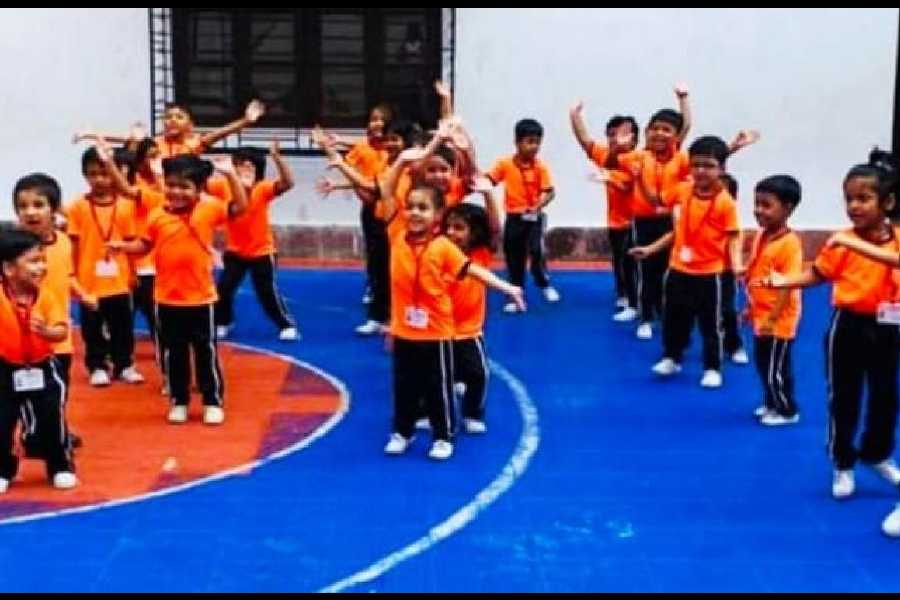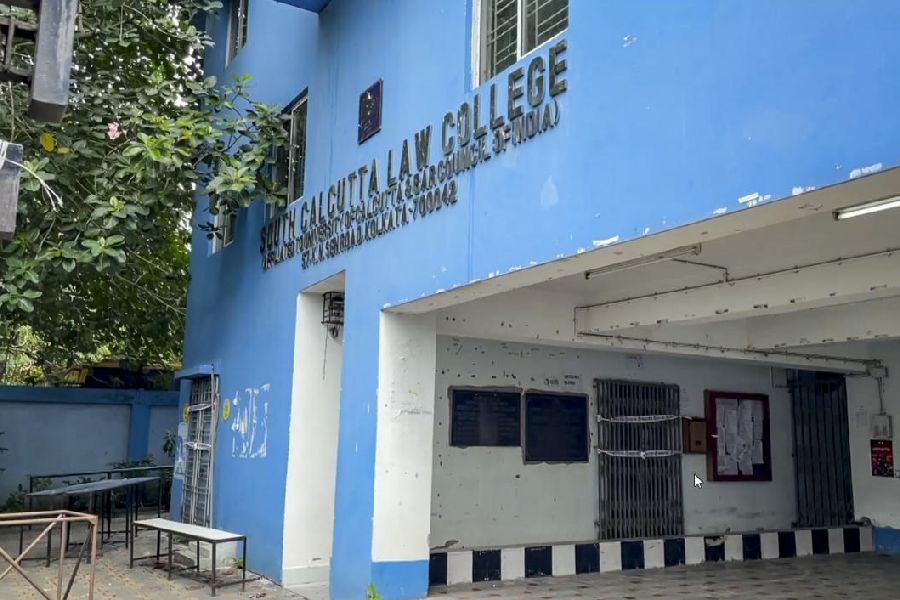 |
With the Pujas here, plans are afoot. The best ones — for the “whole-night”, or an early morning north Calcutta tour, or a foray into the theme pujas in south Calcutta or even Salt Lake — are likely to include the car, the driver, lunch or dinner, per capita income, per capita spend, what is to be worn on which day. But there is always a gaping hole in these plans, especially for women: out for long hours in the city, amidst surging crowds, where does one find a public toilet? So here’s a loo guide for the pandal-hopper.
But where are the toilets? The Calcutta Municipal Corporation (CMC) says there are 168 pay-and-use toilets in Calcutta, a city with an area of 185 sq km. Which implies that Calcutta has nearly one public toilet per sq km. The number, says Abhijit Gupta, who teaches English at Jadavpur University and writes a blog called The Good Loo Guide: “The number has to be 10 times more.”
Missing
There are no loos on VIP Road in the stretch between Ultadanga and the airport. Unless one stops at Haldiram Pure Foods to use its facilities. The Metro stations and local trains too do not have toilets.
Says Debaroti Maitra, an MA student who commutes from Konnagar to Howrah: “Local trains don’t have toilets. And it can get quite troublesome. I think the platform at Liluah had a ladies toilet, which was closed later because it was unsafe. And the pay-and-use in Howrah is very dirty.”
Loos are hard to find in the Esplanade area, between Ballygunge Phanri and Park Circus and on Camac Street. Adds Diptangshu Mitra, a first-division cricketer: “There is nothing on EM Bypass. There should be one at Rabindra Sadan. The office areas and the busy junctions must have at least five or six good pay-and-use toilets with proper pointers and road directions. And if they plan for one toilet for every two Metro stations, it should be okay. I think for women it is more essential.”
Unusable
Even if a toilet can be spotted, the state it is usually in is revolting.
Suppose you are visiting the Simla Byayam Samiti’s puja on Vivekananda Road and need to use the toilet. You come to the Girish Park pay-and-use toilet. You could follow your nose, for the stench hits you from a distance. Located near the Metro Station on Chittaranjan Avenue, it is messy and unhygienic. Natasha Ali, 13, has just used the ladies toilet. “It’s unclean. It has paan stains and God knows what else on the walls!” she cries in disgust.
Ratan Poddar, who mans the counter, comes in at 2pm and stays till 10 pm . “It used to be cleaner before,” he claims. “All the places are in the same condition,” he adds. Poddar was posted at a pay-and-use in Rajabazar.
Suppose you are now visiting the Shyampukur puja and your friend needs to use the toilet. It is hard to find, though a toilet is to open shortly on Bhupen Bose Avenue, near Shyambazar Metro station. The toilet on Bidhan Sarani is hidden among sari stalls. Though it does not smell of ammonia, this toilet, maintained by Society Development Organisation, comes with a small “choubaccha” (an open water tank) taking up a lot of space. “Men can take a bath, but we do not allow women because they use more water and also take up a lot of space,” says Soma Dey, who takes care of the cash box.
The toilet near Tollygunge Metro station is easy to spot. It is quite clean. Not many people drop in, however. There is also a dearth of water. “We are planning to stay open late into the night during the Pujas,” says the caretaker. In Gariahat, there is a toilet on the crossing under the Gariahat flyover. Built in 2003, it is clean and has murals on the walls and mosaic flooring, but how many know about it?
Details about the Jadavpur 8B bus terminus toilet are available on Gupta’s website. “It costs 50p to micturate and Re 1 to defecate. There is a fine of Rs 51 for those washing clothes inside the loo. A condom vending machine dispenses a pack of three ‘Ustad’ condoms for a Rs 5 coin.” All other toilets may not have condom vending machines, but the charges are the same.
The Southern Avenue, Ballygunge Phanri (near ITI), Esplanade (near the CMC headquarters) and Sealdah station pay-and-use toilets are not doing very well either. Again, not many know that they are there. In the Esplanade and Park Street areas, if required, the well-dressed woman walks into a restaurant, or even a five-star. The gentleman in our country, however well-dressed he is, can always decorate the wall.
CMCspeak
The authorities claim to be helpless. An assistant engineer of the CMC, Pradip Chaudhuri, says: “The VIP road stretch is not in our jurisdiction. We have built three public toilets in Ultadanga.”
 |
Paucity of space is another problem, says Aloke Bandyopadhyay, the director-general of the bustee services wing of the CMC. “Take Dalhousie for instance. Where is the place to build a public toilet?”
The first pay-and-use toilet was built by the CMDA in 1985. There were about 60 such toilets in 2000. The CMC is not directly responsible for maintaining the facilities. After building the facilities, an NGO or a Neighbourhood Committee (NHC) is appointed to maintain the premises. An NHC is a committee comprising women of a particular ward who live below the poverty line. The NHC or NGO pays an amount of money out of its earnings as royalty to the CMC.
“The CMC inspects the facilities and if they are not maintained well or certain conditions aren’t met, the contract is cancelled,” says Mohammad Abu Sufiyan, the mayoral council member (bustee services) of the CMC. If that is the criterion, very few public toilets should be allowed to operate.
But keeping an eye on all of the facilities is impossible, authorities add. “Especially in the busy areas. Sweepers clean the toilet about two to three times a day. People might come in just after it was cleaned and dirty the place,” says Bandyopadhyay of the CMC.
NGO network
An average public toilet can cost about Rs 5 lakh to build. The “fancier” ones cost more. The one near Golpark at the Southern Avenue crossing, which is built like the Sydney Opera House, cost Rs 9.5 lakh, according to Chaudhuri. Last year, the CMC’s revenue from pay-and-use toilets came to Rs 40 lakh. Quarterly royalty from each outlet is different. A place like the Gariahat pay-and use toilet can yield quarterly revenues of Rs 20,000 while the smaller Lake Gardens toilet can earn Rs 3,000.
There are 34 NGOs and eight NHCs that maintain the public toilets in Calcutta. The NGOs include Sulabh International, Live and Let Live Society and Sukriti Well-wishers Association. Sulabh, founded by Padmabhushan Bindeshwar Pathak, earned the rights to maintain the first pay-and-use toilet built in 1985.
“We employ a minimum of two caretakers and two sweepers at the Sulabh outlets. The toilets are open from 5am to 10.30pm,” says Bimal Mohan Jha, vice-chairman (eastern zone), Sulabh International. Sulabh maintains 6,000 toilets in 20 states and employs a staff of 50,000. Gupta feels the Sulabh toilets are better maintained.
Other cities
Toilets are a problem in most Indian cities, but some fare better.
Ad man Prahlad Kakkar, based in Mumbai, was compelled to make a film called Bumbay on the city’s lack of sanitation. “I made the documentary about four or five years back. It was about how an illustrious city does not provide for 50 per cent of the population, who have to go absolutely anywhere — railway tracks and roads. The women have to control their bowels and go out after sunset. They go in groups of four or five so that they feel safe. They carry umbrellas to hide themselves from headlights. They are poor people.”
But Kakkar adds: “There must be about 1,500 pay-and-use toilets now in Mumbai. They are very clean. The charges are 50 paise or Re 1.”
“I have been in Delhi for the past three years and have seen that every crossing has a loo. There are no charges for urinating. They are well-maintained. I have also not seen people urinating in the streets,” says Kamal Karmakar (name changed on request), who works in a public sector company.
Things to do
But all is not lost, according to the city authorities. Mohammad Sufiyan of the CMC says: “We are considering starting mobile toilets with three to nine seats that can wait around the Esplanade area and the busy junctions.” Adds Chaudhuri: “We are also planning on creating indicators pointing to the nearest toilet.”
Gupta says that the problem needs to be looked at the whole year round, not just during the Pujas. “People who live in slums or the pavement dwellers need a place to wash their clothes and visit the loo. Then there are construction site labourers, courier-service men, door-to-door sales persons, taxi drivers, thelawallahs and the entire transport sector — a whole lot of people whose work takes them all around the city. The city should be able to provide them with the basic amenities.”
But till then, wall-pissoirs will continue their work, women will be forced to forget their bladders or jump into a taxi even if they can’t afford to and pandal-hopping may be fraught with tension.










